Red-rumped parrot
Red-rumped parrot or grass parrot/ Singsittich
Psephotus haematonotus
The Red-backed Parrot ( Psephotus haematonotus ), also known as the Grass Parrot , is a common bird in south-eastern Australia. Red-backed parrots are slender, medium-sized parrots with a length of about 28 cm (11 inches). The male's plumage is bright emerald green with yellow underparts, a brick-red rump and blue accents on the wings and upper back. The female's plumage is less vivid, with pale olive underparts, dull green wings and back and blue-black wing tips. The characteristic red rump is only found on the male. Red-backed parrots can be found in pairs or flocks in open country with access to water. They avoid the coast and the wetter, more heavily forested areas. The clearing of large areas of forest and the provision of water for livestock have probably extended their range. They are often seen in suburban parks and gardens. Their green plumage provides such good camouflage in ankle-length grasses that they can hide quite well until the observer is only 10-20 metres away.
They spend a lot of time feeding on the ground, often calling to each other with an attractive Chee Chillip Chee Chillip .
Der Rotrumpfpapagei ( Psephotus haematonotus ), besser bekannt als Graspapagei oder Singsittich, ist ein weit verbreiteter Vogel im Südosten Australiens. Rotrumpfpapagei Papageien sind schlanke, mittelgroße Papageien mit einer Länge von etwa 28 cm (11 Zoll). Das Gefieder des Männchens ist leuchtend smaragdgrün mit gelben Unterteilen, einem ziegelroten Hinterteil und blauen Akzenten an den Flügeln und am oberen Rücken. Das Gefieder des Weibchens ist weniger lebhaft, mit hellolivfarbenen Unterteilen, mattgrünen Flügeln und Rücken und blauschwarzen Flügelspitzen. Das charakteristische rote Hinterteil findet man nur beim Männchen. Rotrumpfpapageien können in Paaren oder Herden im offenen Land mit Zugang zu Wasser gefunden werden. Sie meiden die Küste und die feuchteren, stärker bewaldeten Gebiete. Die Rodung großer Waldgebiete und die Bereitstellung von Wasser für die Viehzucht haben wahrscheinlich ihr Verbreitungsgebiet erweitert. Sie werden oft in vorstädtischen Parks und Gärten gesehen. Ihr grünes Gefieder bietet eine so gute Tarnung in knöchellangen Gräsern, dass sie sich ziemlich gut verstecken können, bis der Betrachter nur noch 10–20 Meter entfernt ist.
Sie verbringen viel Zeit damit, auf dem Boden zu fressen, und rufen sich oft mit einem attraktiven Chee Chillip Chee Chillip zu .
https://ebird.org/species/rerpar1/
taken 11.22
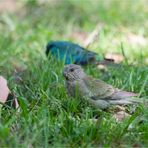
The female
Manu T.
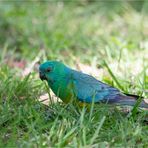
Red-rumped parrot
Manu T.
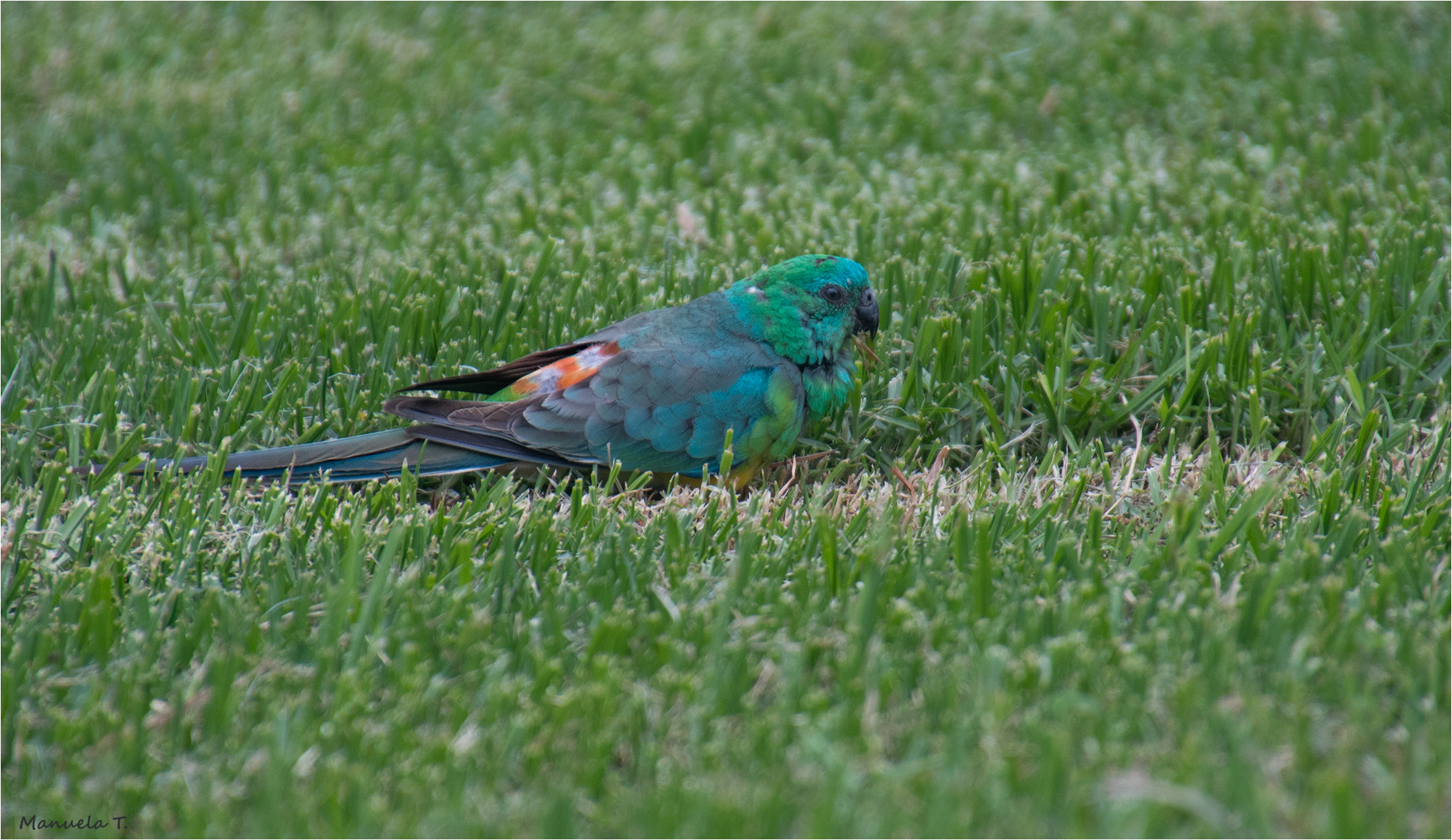
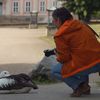


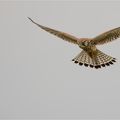













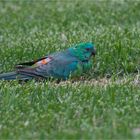
Marina Luise 15/01/2023 9:21
In den Farben kenne ich die gar nicht! Tolle Tarnung im Rasen.Harold Thompson 14/01/2023 15:51
Good shot and infoHarold and Sue
Hans-Detlev Kampf 13/01/2023 14:47
Glückwunsch... es ist ein schönes und natürliches Bild dieses Sittichs.Eigentlich könnte man fotografisch sein Leben mit ihnen verbringen... sie sind so abwechslungsreich.
LG und dir ein schönes Wochenende
Detlev
Wolfgang Kaeding 13/01/2023 13:56
Hallo Manu,ein sehr schönes Foto vom Sittich, an den kann ich mich gar nicht erinnern.
Viele Grüße Wolfgang
Adele D. Oliver 13/01/2023 3:22
a striking male with his brightly coloured plumage andbeautiful markings ...a fine portrait with top definition in
his plumage !!!
wishing you a nice weekend,
Adele
Vitória Castelo Santos 12/01/2023 20:26
WUNDERBARE!Dario Zeller 12/01/2023 19:53
Ein ganz Hübscher.Mark Billiau. 12/01/2023 19:32
Well spotted and beautifully captured in great sharpness on the grassland !A wonderful parrot it is !!
Axel Sand 12/01/2023 18:14
Du warst aber sehr erfolgreich in Down Under. Toll gemacht, Manu.Gruß Axel
H.D. G. 12/01/2023 17:51
Ein schöner farbenprächtiger Vogel.Er hat wohl gedacht er wäre gut getarnt. ;-)
Gruß Dieter
CarliG 12/01/2023 17:42
Eine Klasse Aufnahme .. Vom schönen VogelHast du gut gemacht !
LG CarliG
philipp52 12/01/2023 17:09
beeindruckend schönes Bild Ton in Ton, ManuLG Philipp